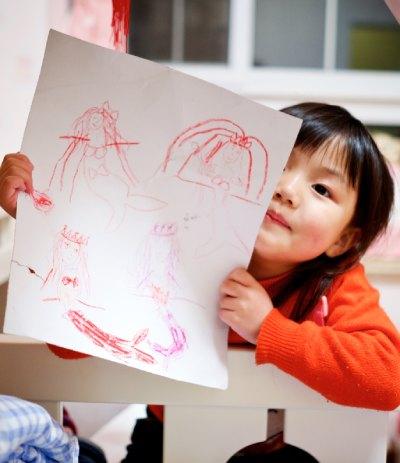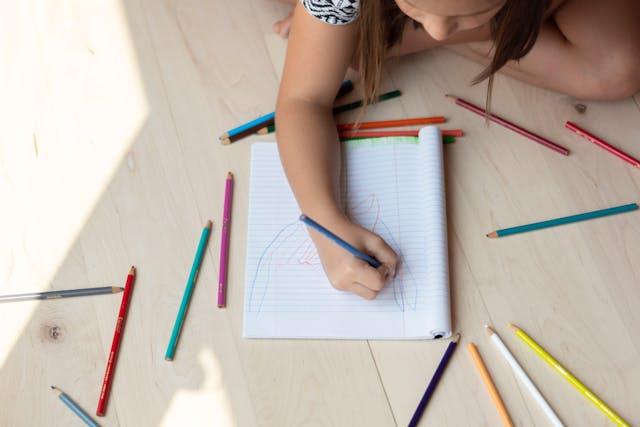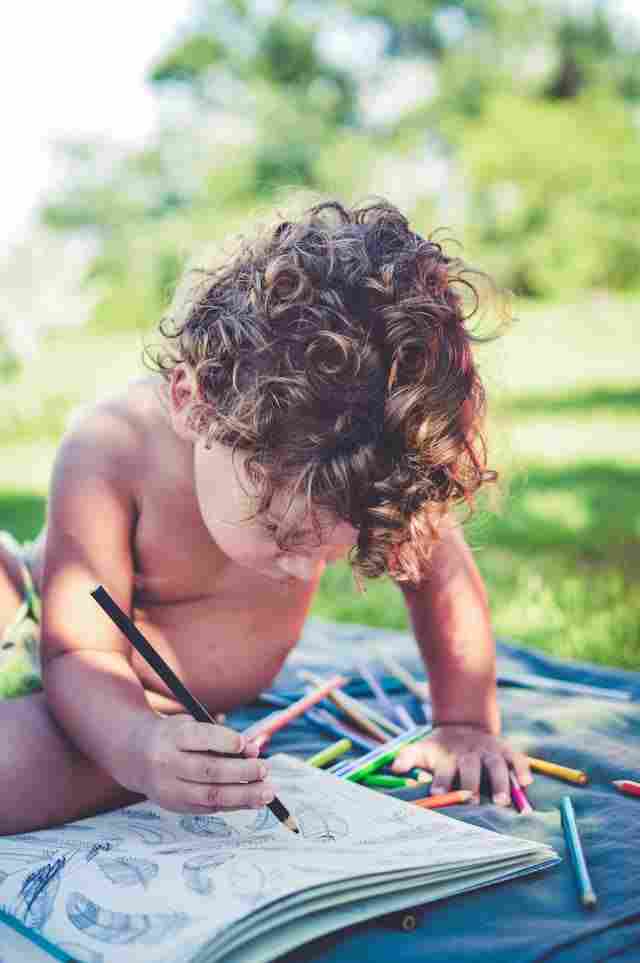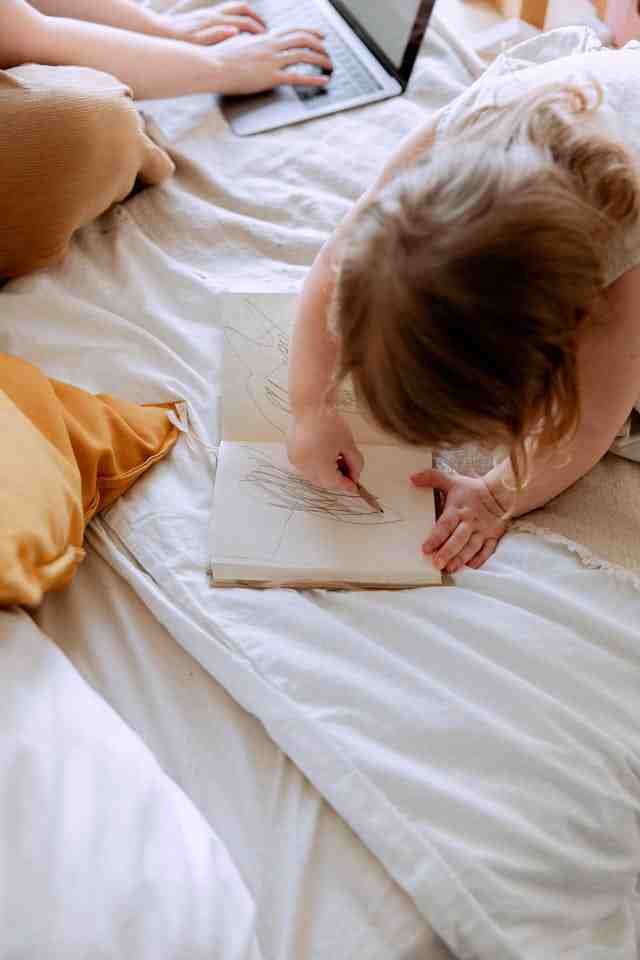MEANING OF YOUR CHILD DRAWINGS YOU DIDN’T KNOW.

Your little bundles of joy are filled with emotions just like you but constantly struggles to express themselves due to a lack of language skills. Of course, whatever little talking they do, gives only a little insight into their minds.
Thankfully, advancement in science has now made it possible to decode kids’ drawings. Your child’s drawings are precious as by merely looking at them, you can judge your child’s fears, dreams, and joys.
Make sure to preserve the artwork of the young artists who see the world with their little eyes. Children draw and scribble to have fun play sometimes, but sometimes analyzing child’s drawings can take you in the deeper layer of their thinking and feelings.
HOW DO YOU READ KIDS’ DRAWINGS?
Small observations lead to big discoveries.
To begin with, you must encourage kids to share the ideas behind their drawings.
Asking them questions like, ‘Who are the people in the drawing?’, ‘What are they doing?’, might reveal things about your child that you could never see yourself.
VARIOUS STAGES OF DRAWINGS

There are three stages of drawings, namely:
- Scribbling (2-4 years)
- Pre-schematic (4-7 years)
- Schematic (7+ years)
- Scribbling (2-4 years) – This is the first stage of drawing, in which a child usually makes some marks on Paper. At first sight, the patterns may appear to be nothing, but once the scribbles are done, you might see a dog, car, or park. This kind of drawing is often referred to as “fortuitous realism.”
- Pre-schematic (4-7 years) – In this stage, the children start to draw things that they see from their little eyes. Cars, trees, friends, trucks are things often drawn by them. The drawings may look non-realistic at times as kids are still learning to draw. The kids may add specific details like flowers, clothes to their pictures.
- Schematic (7+ years) – In this stage, the children are capable of expressing their viewpoints. The drawings are more realistic and detailed. For example, a sketch of the ocean will show people in swimming suits, fishes, starfish, crabs, children swimming in the water, etc. Children also use simple words to explain their drawings.
WHAT DO THE COLOURS SIGNIFY?

We have been buying pink booties for our baby girls and blue booties for baby boys. But, have you ever thought about how we concluded that girls would like pink and boys will like blue?
Some researchers verify that girls prefer warmer colours like pink, whereas boys prefer cooler colours like blue. Of course, the fact gets confirmed when girls grow up to buy pink barbie sets, and boys grow up to buy blue cars.
WHAT DOES THE CHOICE OF COLOURS SIGNIFY?
- Black and purple colour is usually preferred by a child who is demanding by nature.
- Pink is a colour of girls who need love and appreciation.
- Green is for those who like to learn about space. Such kids are intelligent and have unique sets of choices.
- Yellow is for kids who are intelligent, cheerful, and happy.
- Blue colour is preferred by a child who is caring by nature.
- Red is a popular colour among kids. It signifies excitement and is used by kids who want to learn and participate in everything.
Generally, if you see drawings with bright colours, they indicate the happy mental state of kids, whereas excessive dark colours may show sadness or anxiety.
The drawings made by girls will have plenty of colours as compared to boys. In addition, there is a significant difference in the pattern of pictures of both genders. Boys prefer drawing straighter lines making buses, roads, whereas girls like drawing circular shapes making flowers, hearts, etc.
WHAT DOES THE POSITION OF THE DRAWING ON THE PAPER INDICATE?
You would be surprised to know that even drawing on Paper gives an insight into the child’s personality.
The left-hand side of Paper: If a child draws more to the left side of Paper, it indicates relation with the past. The left-hand side relates to mothers.
The right-hand side of Paper: If a child draws more to the right side of Paper, it indicates relation with the future and a need to communicate. The right-hand side relates to fathers.
Middle of Paper: If a child draws a proportionate figure somewhere in the middle of the Paper, it shows a well-balanced mindset.
Top-half: If the picture is drawn on the top half, it means the child is ambitious.
Bottom-half: If the picture is drawn on the bottom half, it means the child is insecure.
Top-left: If a picture is more of the top-left side of Paper, the child is interested in music or is artistic.
Top-right: Pictures on the top-right side of the Paper shows a child is eager.
Corners: If you see drawings made on the Paper’s corners, it means the child is insecure.
HOW TO READ EMOTIONS BY DRAWINGS?

Kids’ feelings and emotions can be read through their drawings. A small piece of advice here is not to get too carried away by the shared information here, as researchers believe that these observations might indicate how a child is feeling, but other factors work simultaneously.
If drawings are made with minute details, kids think they need to try hard to achieve things in life.
If bold strokes are used, it may mean stress or anger, whereas gentle strokes suggest gentle nature. If light broken lines are used, the child is hesitant or insecure, whereas if continual bold lines are used, it means the child is confident and has a balanced mindset.
WHAT DOES IT MEAN WHEN A CHILD DRAWS BIG HANDS?
While drawing figures, the size of the figure talks a lot about a child’s personality. It is usually seen that important figures are often drawn larger by kids. If it’s a self-portrait, then larger hands indicate aggressive tendency. Similarly, if the figure is marked with tiny feet, then it indicates insecurity.
WHAT DOES IT MEAN WHEN A CHILD DRAWS A PERSON WITH NO HANDS?
Generally, if a child draws a figure with missing parts, it indicates either mistrust or timidity. Children who draw figures with missing hands turn out to be non-aggressive.
If a child draws prominent figures with asymmetrical limbs and no neck, it indicates an impulsive child.
If a child draws rain, clouds, birds but doesn’t show the eyes on the figures, then the child is anxious by nature.
If a child draws short figures without a nose or mouth, the arms are placed close to the body; then, the child is shy.
If a child has drawn a figure with big teeth and hands with long arms and crossed eyes, it shows the child has angry nature.
If a child makes giant figures, slanted figures, tiny heads without hands, it means the child is insecure.
HOW DO I TEACH MY CHILD TO DRAW?
As parents, we must encourage our kids to be productive and creative. Art is an excellent way of developing thinking abilities in kids and provides them an opportunity to express themselves.
Here is how you can teach your child to draw:
Involvement and encouragement of parents can help a child nurture interests and develop new ones. So, participate as much as you can in developing the artistic skills of your child.
Make art a regular activity: Make art a part of the daily fun activity for your kids. Whether it’s a placemat at a restaurant or a sketchbook, encourage your child to doodle freely. Try investing in colouring tools like markers, crayons, or coloured pencils to generate interest in kids.
Give References: It is easy to draw when you have something to copy from. Always give a print of a picture or use a book or scenery to copy from to kids. Kids learn to draw better when they see a reference in front of them. Books with figures to trace are suitable to generate interest in kids.
Use Observation: Using observation means drawing what your eyes see. The soft toys, dollies, cars, and other objects at home can serve as a great reference to draw. Ask kids to draw the plants or pets on Paper which can be a fun activity. It engages kids and also helps to develop an interest in art.
Use Imagination: Using imagination to draw activates and engages the mind of young artists. Ask the kids to paint their schools, or parks, or streets outside the house.
The more kids draw and colour, the more they will learn and enjoy doing it. Seeking help from ‘how to draw books’ can help kids to learn faster.